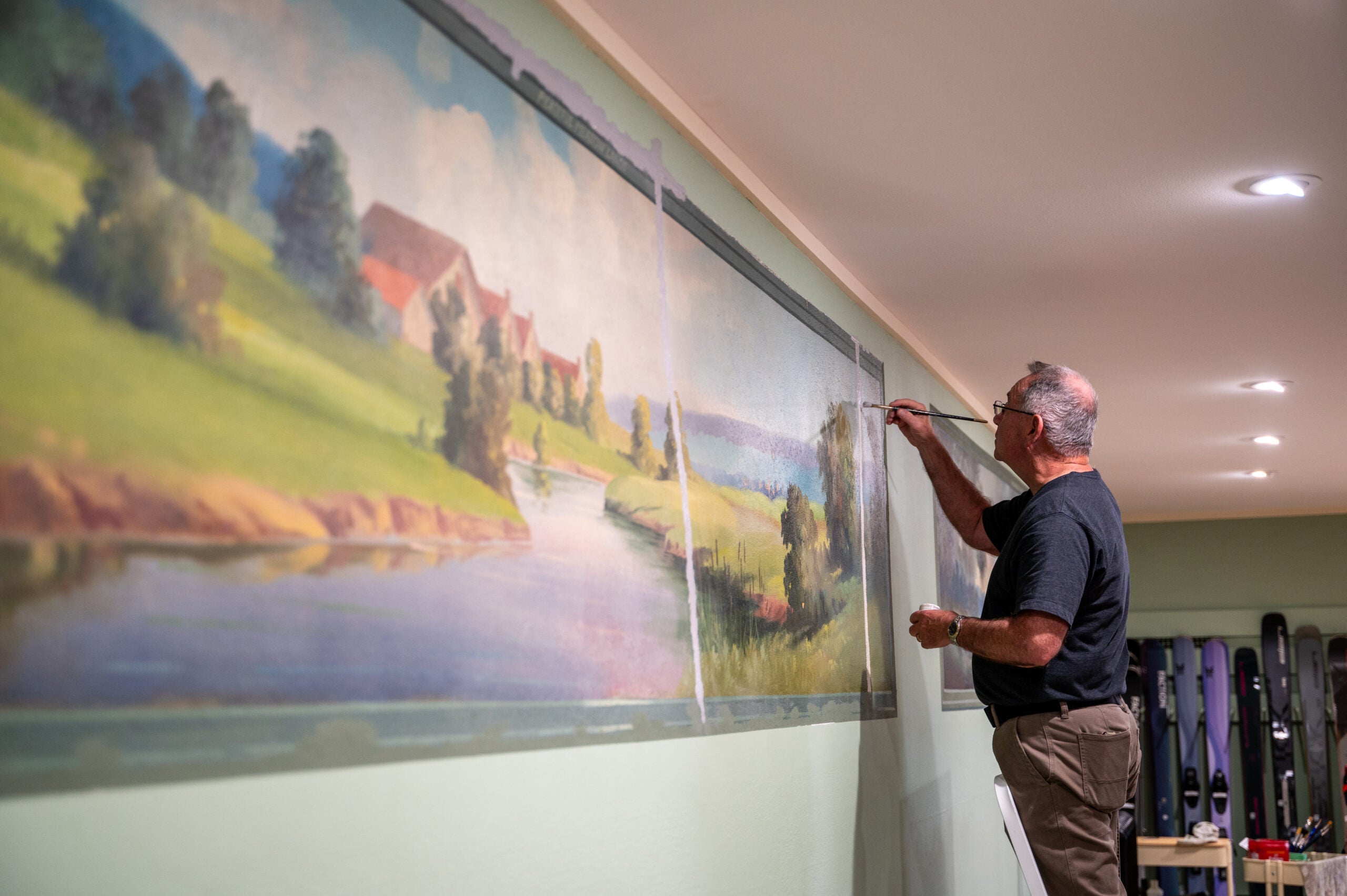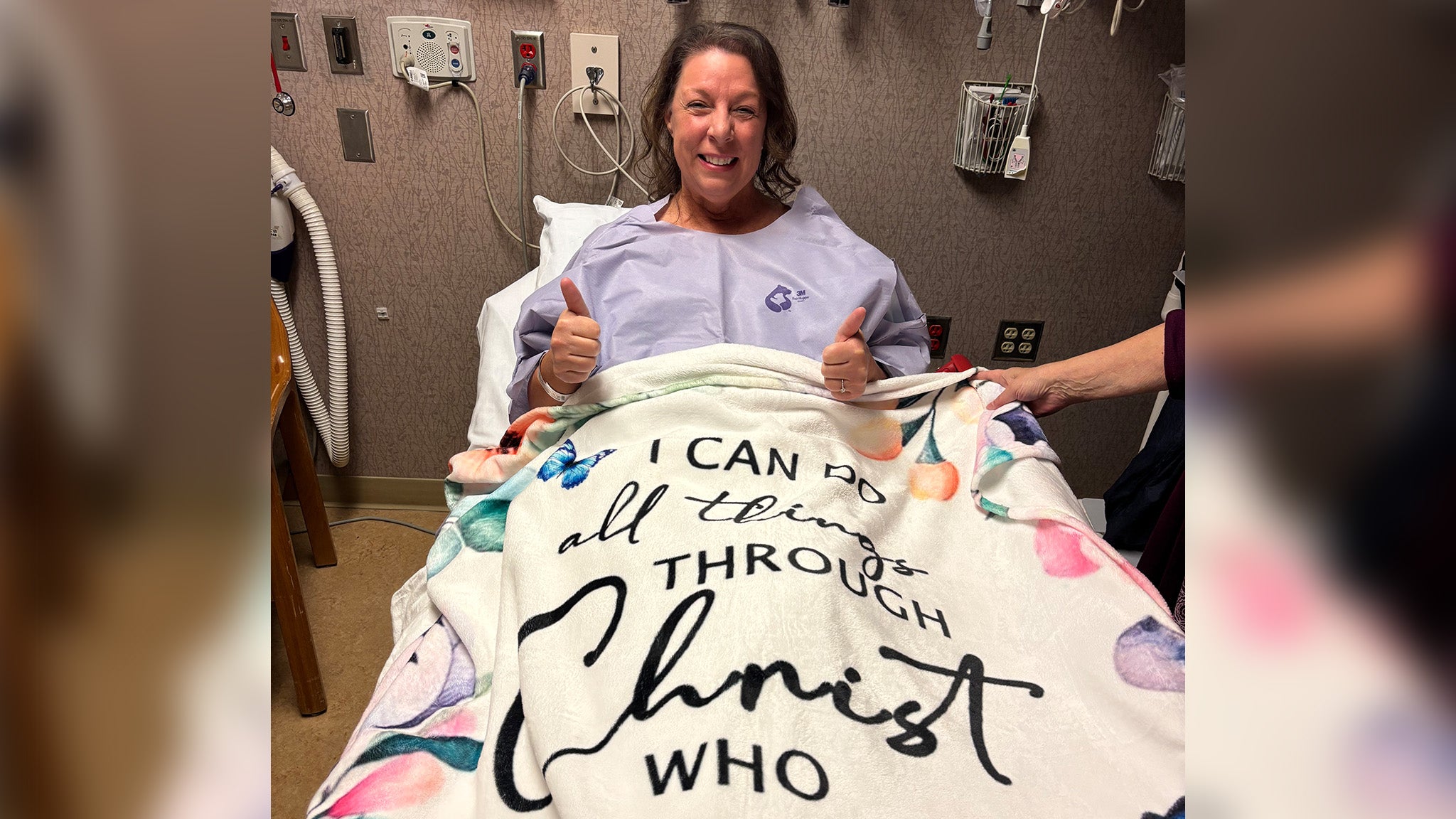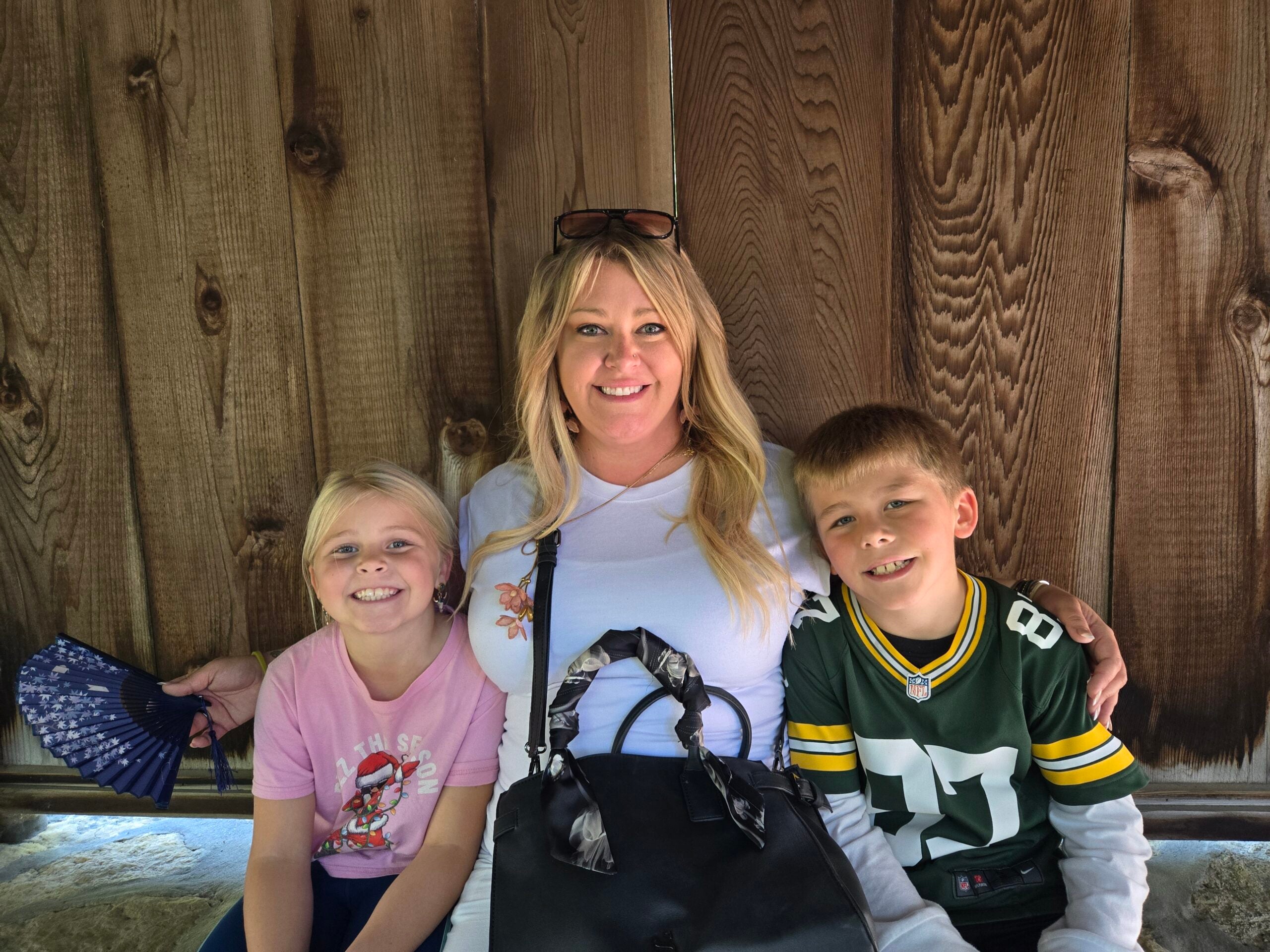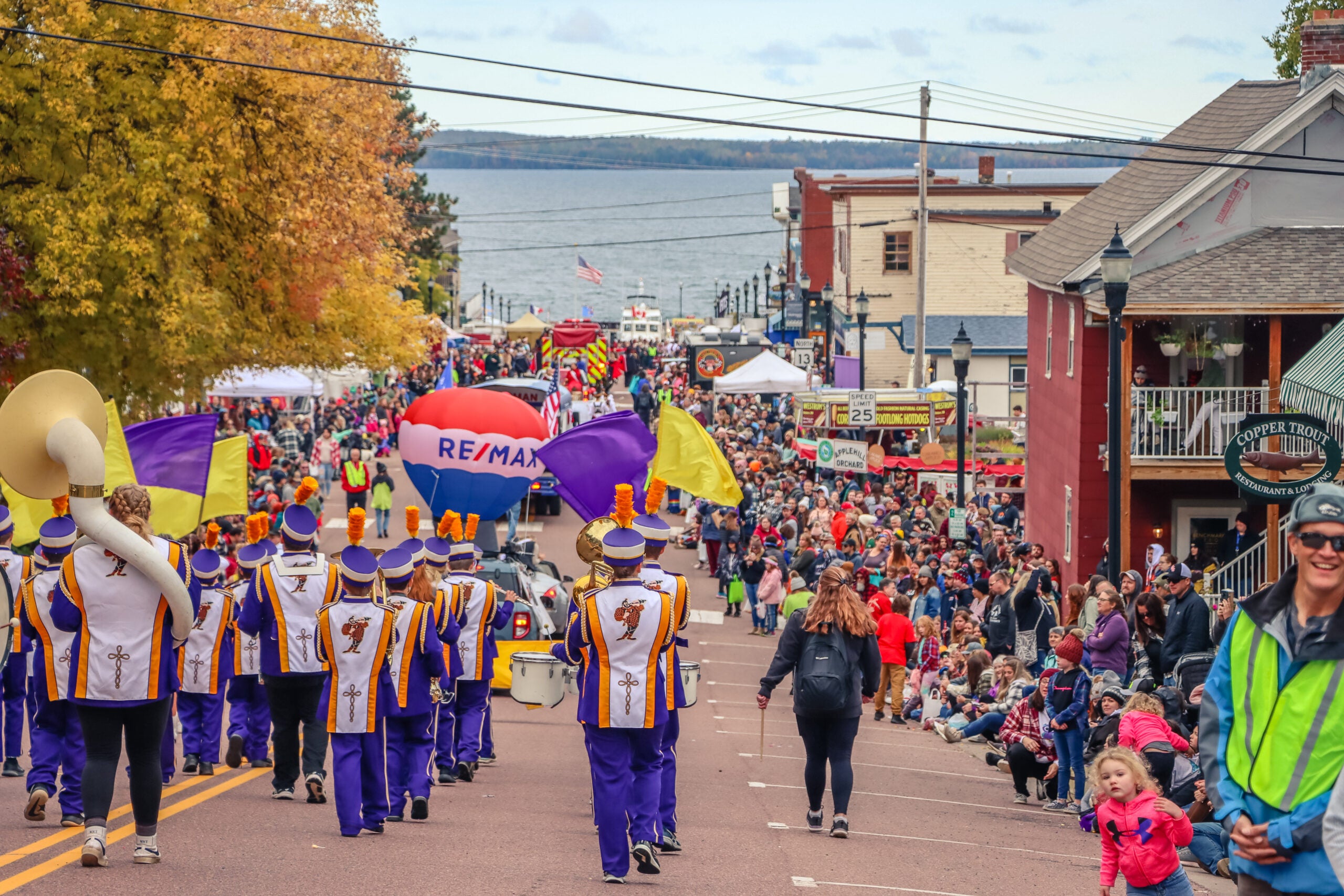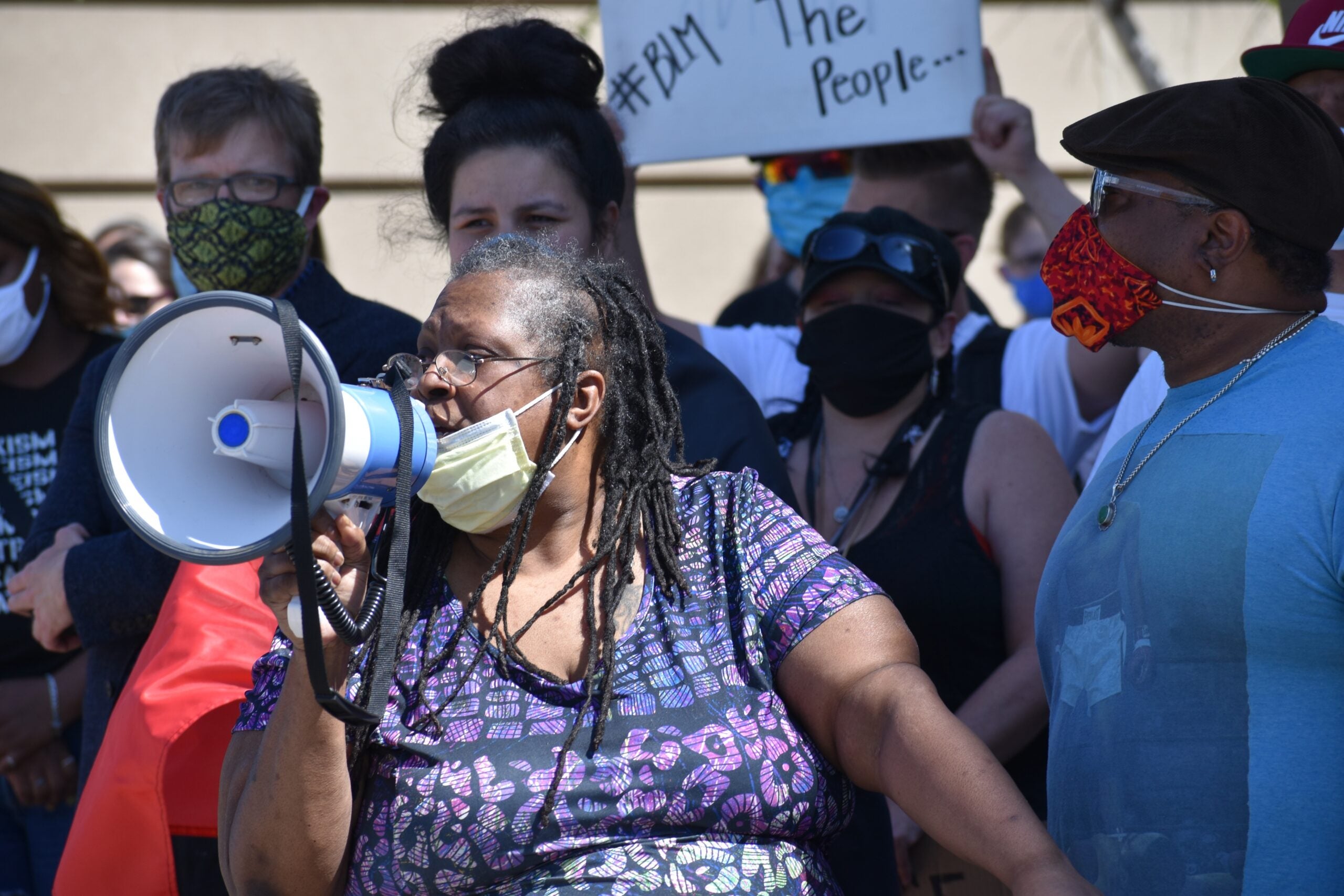Kym Young is known as one of the strongest voices for racial equality in the Twin Ports.
Originally from Virginia, she moved to Superior in the 1990s and studied at the University of Wisconsin-Superior, where she received a master’s in art history and minored in anthropology.
She spent many years as an advocate for survivors of domestic violence and integrates her art into that work, with the goal of empowering women and elevating their voices.
News with a little more humanity
WPR’s “Wisconsin Today” newsletter keeps you connected to the state you love without feeling overwhelmed. No paywall. No agenda. No corporate filter.
“I was able to use my art to show that there’s a side of the survivors of abuse that’s not seen — that we need to make sure these women are seen as members of the community, and not just something to hide away,” she said.
Inspired by a visit to a women’s collective in Oaxaca, Mexico, one of Young’s goals has been to explore new cultures and bring that knowledge to others so that they can envision a world outside of their comfort zones.
Her many friends send wishes for her comfort after her admission to hospice care recently due to complications from a rare form of Crohn’s disease.

She spoke from hospice to WPR’s Robin Washington on “Morning Edition” about her varied career and its impact.
This conversation has been edited for clarity and brevity.
Robin Washington: Before anything else, how are you doing?
Kym Young: Right now, I’m getting over a case of the mumps. I had not known that people could get it later in life, so it’s been a lot of self discovery.
RW: That’s on top of your primary ailment.
KY: Yes, it’s Crohn’s. My digestive system is basically unraveling. Part of my digestive system has been cut away, which we thought was going to help, but it didn’t. The Crohn’s came back more aggressively and at this point has started to destroy my body’s systems.
This is something strange to be proud of, but I’m one of the first people that’s going to be dying from something that normally isn’t fatal. It’s slowly killing me and it came to a point that I can’t take any more medication. And my doctor sat me down and said, “We’re just basically keeping you alive right now.”

RW: There’s so much to your life. I often ask people to share something that others may not know about them. I don’t know how many people who know you from your activism are familiar with your art studies. What brought you to UWS to study art?
KY: I’d been an artist since I was young. I wanted to go to art school, but my mother said, “No, you should go to Duke University to study law or medicine.” I didn’t want to do either of those, so I got my high school diploma and went to work. Later, I went to Lake Superior College to get my associate degree because I wanted to move up at a job I had.
RW: Then you went all the way through to a master’s program at UW-Superior. Did you study under the late art professor Pope Wright?
KY: Yes, I did. He was not only my mentor, he was my friend. He was my colleague. He mentored a lot of students on the legacy of the Civil Rights Movement. He not only gave me an art history background, he gave me a Black background. What I learned from Pope was how to express my art in a way that helped women who were experiencing domestic violence.
RW: There’s also your racial justice work. I remember right after the murder of George Floyd, there was a huge rally in Duluth where you were asked to speak. You were already feeling the effects of your illness but said being there was so important that — in your words — “I put my bra on! My righteous armor!” — and made it there. People are still talking about that.
KY: Yes, I remember.
RW: What’s the legacy of your work, even as today we have rollbacks on DEI and almost a complete reversal from how the country responded to George Floyd’s murder?
KY: We did get some good for Duluth and Superior. Superior now has its Commission on Communities of Color, which gives us an opportunity to work on racial justice with the local criminal justice system. We moved a few mountains.
RW: What’s your advice to young activists today — or young art history majors, or young domestic violence advocates?
KY: Don’t give up. Learn everything you can and use what you’ve learned to turn the tables on injustice.
If you have an idea about something in northern Wisconsin you think we should talk about on “Morning Edition,” send it to us at northern@wpr.org.



